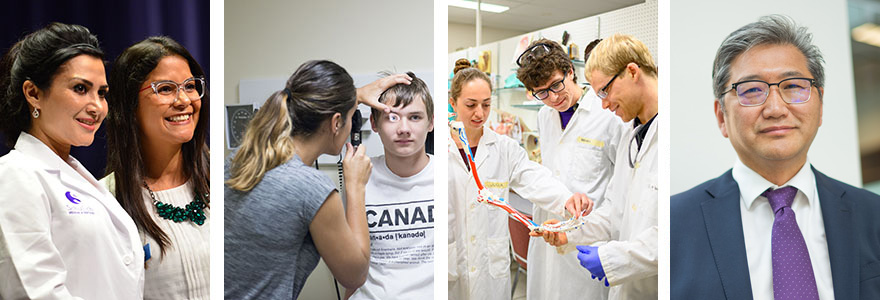Search Website
QUICK LINKS:
Accreditation

Accreditation is a standards-based peer-review process that reviews the Doctor of Medicine (MD) programs ensuring it possesses the essential processes and meets the mandated elements consistent with quality in medical education. It is an ongoing quality improvement process that culminates in an external site review once every eight years.
As a Canadian medical school, the Schulich School of Medicine & Dentistry, Western University is accredited by the Committee on Accreditation of Canadian Medical Schools (CACMS). Obtaining accreditation from CACMS has two general and related aims:
Accreditation Overview
In the CACMS accreditation process, the CACMS determines whether an undergraduate medical education program meets accreditation requirements. Medical schools are expected to achieve compliance with each of the 12 standards. The CACMS bases its compliance judgements on the assessment of satisfaction with accreditation elements that are linked to each accreditation standard.
As a process of evaluation, accreditation seeks to answer three general questions:
- Has the medical school clearly established its mission and goals for the educational program?
- Are the program's curriculum and resources organized to meet its mission and goals?
- What is the evidence that the program is currently achieving its mission and goals and is likely to continue to meet them in the future?
The general steps in the accreditation process are as follows:
- Completion of a Data Collection Instrument (DCI).
- Completion of an Independent Student Analysis (ISA).
- Completion of a Medical School Self-Study (MSS).
- Visit by site visit team on behalf of the Committee on Accreditation of Canadian Medical Schools (CACMS).
- Action on accreditation by the School, CACMS.
The accreditation standards that are currently in effect for the next full accreditation process, set to take place in fall 2023, include:
Below is a high-level timeline for the accreditation process, involving both internal review by the School and a site-visit by CACMS.
|
September 2021 to October 2022 |
Internal review begins, two years in advance of accreditation site visit. Completion of first draft of Data Collection Instrument (DCI). |
|
May, July, September 2022 |
Distribution of Independent Student Analysis (ISA). |
|
September 2022 to January 2023 |
Sub-committees use DCI and ISA to compile the Medical School Self-Study (MSS). |
|
February 2023 to May 2023 |
Steering committee finalizes MSS, for submission three months in advance of site visit by CACMS. |
|
June 2023 |
All documents submitted to CACMS: MSS, DCI, ISA |
|
October 2023 |
Virtual visit by CACMS. |
|
December 2023 |
On-site visit by CACMS, of both the London and Windsor campus. |
As per CACMS, there are three possible accreditation statuses for each of the elements within the 12 standards that exists in the MSS.
Satisfactory (S): The required policy, process, resource, or system is in place and, if specified by the element, there is sufficient evidence to indicate that it is effective.
Satisfactory with a need for Monitoring (SM):
- The medical education program has the required policy, process, resource, or system in place, but there is insufficient evidence to indicate that it is effective. Therefore, monitoring is required to ensure that the desired outcome has been achieved.
- The medical education program’s performance currently is satisfactory with respect to the element, but there are known circumstances that could directly result in unsatisfactory performance in the near future. Therefore, monitoring is required.
Unsatisfactory (U): The medical education program has not met one or more of the requirements of the element. The required policy, process, resource, or system either is not in place or is in place but has been found to be ineffective.
For all accreditation related matters and questions, please email Jenny Krista in the UME office.